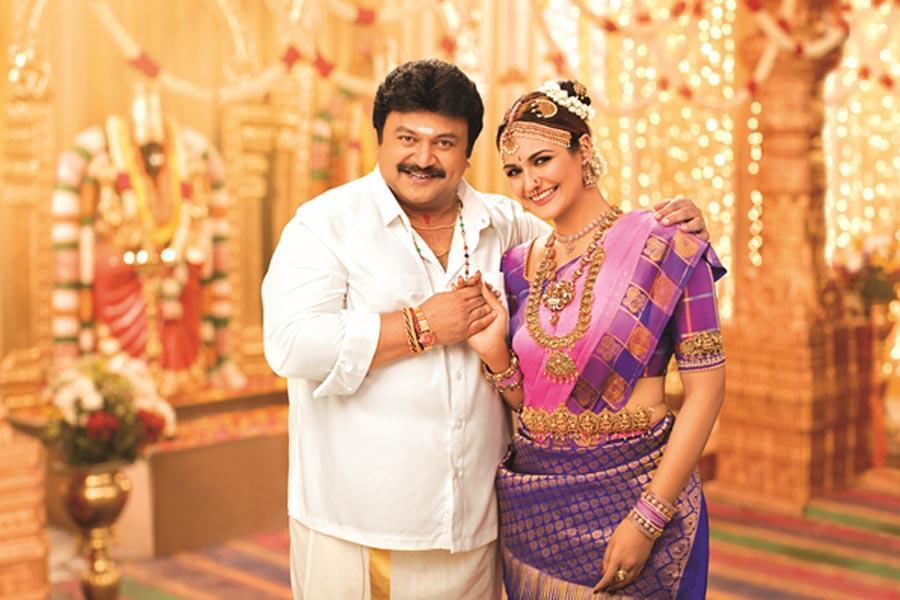Wedding Themes: Iyer Weddings


“Sita Kalyana Vaibhogame
Rama Kalyana Vaibhogame”
Any Iyer wedding will be incomplete without women singing this to the couple. It is to invoke the blessings of Lord Rama for the couples in holy matrimony. A typical Iyer wedding lasts about 2 days and has the following ceremonies.
In the early hours of the first day, The Vratham is started with seeking blessings from Lord Ganesh to bless the ceremony and the couple. The stage is set up with two groups doing the rituals, one with the bride and her family and the other with the groom and his family. The bride is normally dressed in a vivid silk sari and is accessorised with traditional south Indian bridal jewellery sets. The groom is dressed in a crisp white pachaghajam for all the ceremonies.
Often known as Engagement in English, this ceremony is to honour the important relatives of the bride and groom. A Thaamboolam (a plate with betel leaves and nuts, banana, fresh flowers, kumkum and a sari for the bride) is exchanged as a mark of commencement of the Wedding Gala. The bride accepts the sari, wears it and gets the blessings of all the elders gathered. Sometimes the bride and groom exchange diamond rings at this juncture.
As in any “Baaraat”, the groom is made to sit in a horse drawn chariot or a car decorated with hundreds of flower garlands and the wedding entourage accompanies him in a procession to the wedding hall and the couple proceed to the stage for the wedding reception. This is a westernised ceremony held mostly for friends and colleagues. Some brides choose to dress traditional, sporting a grand sari while some brides go for lehengas or huge puffy gowns. The jewels paired are according to the attire. A simple diamond necklace or a Lakshmi haram set would complete the traditional look. The lehengas and gowns would look absolutely ravishing with something bolder, like the Polki choker sets or precious stone jewellery. The groom mostly decks up with a suit and tie.
The next morning, in the appointed muhurtham, the first ritual is commenced. The groom ‘decides’ to forego the wedding as he wishes to take up “sanyaasam” (monkhood). The bride’s father would ultimately convince him to take up “ghruhastham” (family life) giving his daughter’s hand in marriage. The couple would then exchange garlands in a fairly dramatic fashion and proceed to the next ritual at the Oonjal (the swing). It’s a fun ceremony where the whole family comes around to feed the couple milk and banana and perform a ritual to remove any evil eyes from them. After this, the couple walks in a procession to the Manavarai (stage) for the main event.
After a number of mantras being chanted, the bride is asked to change into her wedding attire, the madisaram. It is a 9-yard sari draped in a unique fashion worn only by married women. Predominantly crimson or mango coloured, this sari is paired with traditional Iyer wedding jewellery sets. From Kemp necklaces to Kemp stone nethichuttis, Kemp jewels complete the ultimate Iyer wedding look. The apex of any wedding ceremony, the “Kannigadhaanam” happens with the bride seated on her father’s lap and the groom facing her, tying the knot, showered (literally) by the blessings of the spectators. The couple then chant their marriage vows taking 7 steps (sapthapadhi) and walk around the agni i.e. holy fire 3 times to seal the deal.
In order to lighten the mood after a set of intense rituals, the wedding party has some fun at the expense of the newlyweds during the Nalangu. Little games like dressing each other up, breaking appalam on each other’s heads etc. are conducted after the taxing wedding ceremony and an enormous lunch. Just before the wedding party disperses into the hustle and bustle of their lives the “Kattusaadham” is packed for them. This is simply tiffin packed for their journey back home.